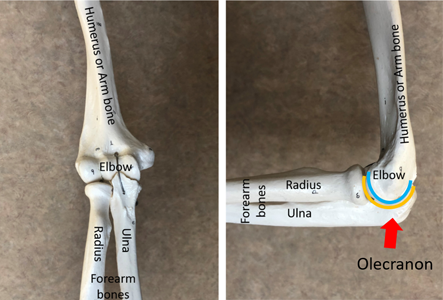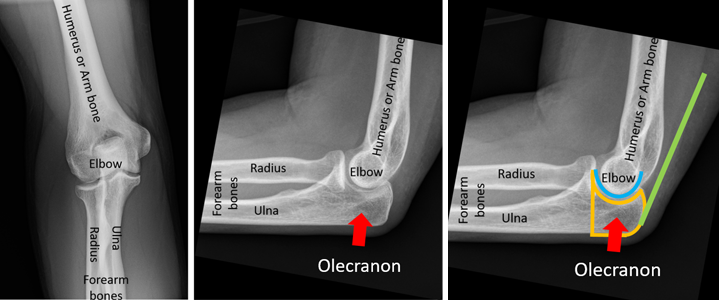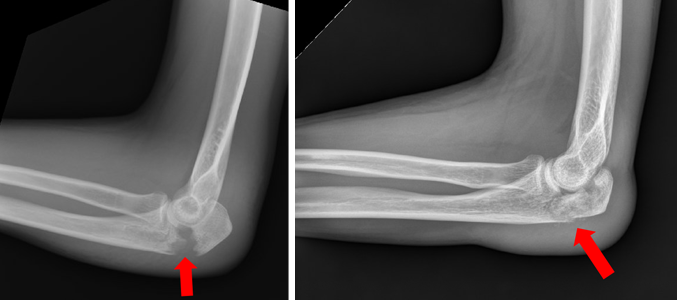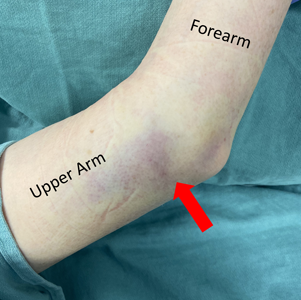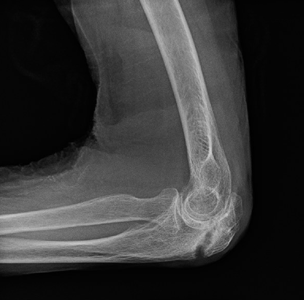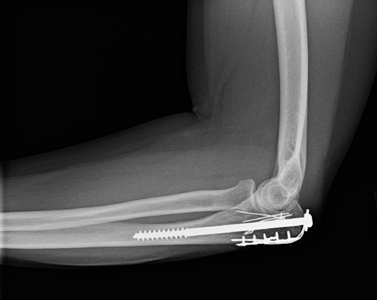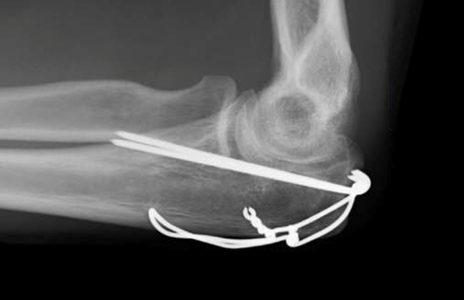Physical Therapy Videos - Elbow
What Is It?
The elbow helps connect your arm to your forearm. It lets you bend and straighten your arm, and turn your hand up and down. The olecranon is part of the ulna, a bone in your forearm. It fits together with the end of the humerus, a bone in your upper arm. The olecranon helps your arm move smoothly. A big muscle called the triceps connects to the olecranon and helps you straighten your arm and push with your hand. If the olecranon breaks, the triceps can pull the broken part away.
How It Happens
A broken olecranon is a common injury. It usually happens when you fall on your elbow or land on your forearm. The end of the humerus pushes into the olecranon and breaks it. The triceps muscle then pulls the broken pieces apart. Sometimes, the bones stick out through the skin. This is called an "open" or "compound" fracture. Swelling and bruising are normal after this type of injury.
Initial Treatment
A broken olecranon is very painful. You'll probably need to go to the emergency room. A healthcare provider will check your elbow and take X-rays. If the bones stick out through the skin, you might get antibiotics and have the wound cleaned. You may get a splint or cast to keep your arm still. If the bones didn't break the skin, you can go home and see an orthopaedic doctor in a few days.
Treatment
If the bones have moved or the smooth joint surface is damaged, you'll probably need surgery. This can help fix the bone and lower the chance of arthritis. The surgery involves a cut on the back of your arm over the elbow. Your doctor will use plates, screws, wires, or strong stitches to fix the broken bone. If you don't need surgery, you'll wear a splint, cast, or brace.
Recovery
After surgery, you'll have a splint or dressing on your arm. Keep the wound clean and dry. Your stitches or staples will probably come out at your first check-up, about seven to fourteen days after surgery. Follow your doctor's instructions on moving your arm. You might have some limits on bending or straightening your arm. When your bones and skin have healed, you might start gentle exercises or physical therapy. This will help you get your strength and motion back. If your elbow didn't need surgery, follow your doctor's instructions on using a splint, cast, or brace, and moving your arm.
Long Term
The most common long-term problem after a broken olecranon is a stiff elbow. You might also have a weaker arm than before. If the smooth surface was damaged, you could get arthritis, which can cause more stiffness or pain. Sometimes the plates, screws, or wires used to fix the bone bother you when you rest your elbow on a table or chair. In this case, you might need another surgery to remove them. In rare cases, the bones don't heal right, and you might need another surgery to fix them. To avoid this, follow your doctor's advice on moving your elbow and lifting things.
Physical Therapy Videos - Elbow
More Information
---
Christopher Domes, MD
Edited by the OTA Patient Education Committee
X-rays and images from the personal collection of Dr. Domes

